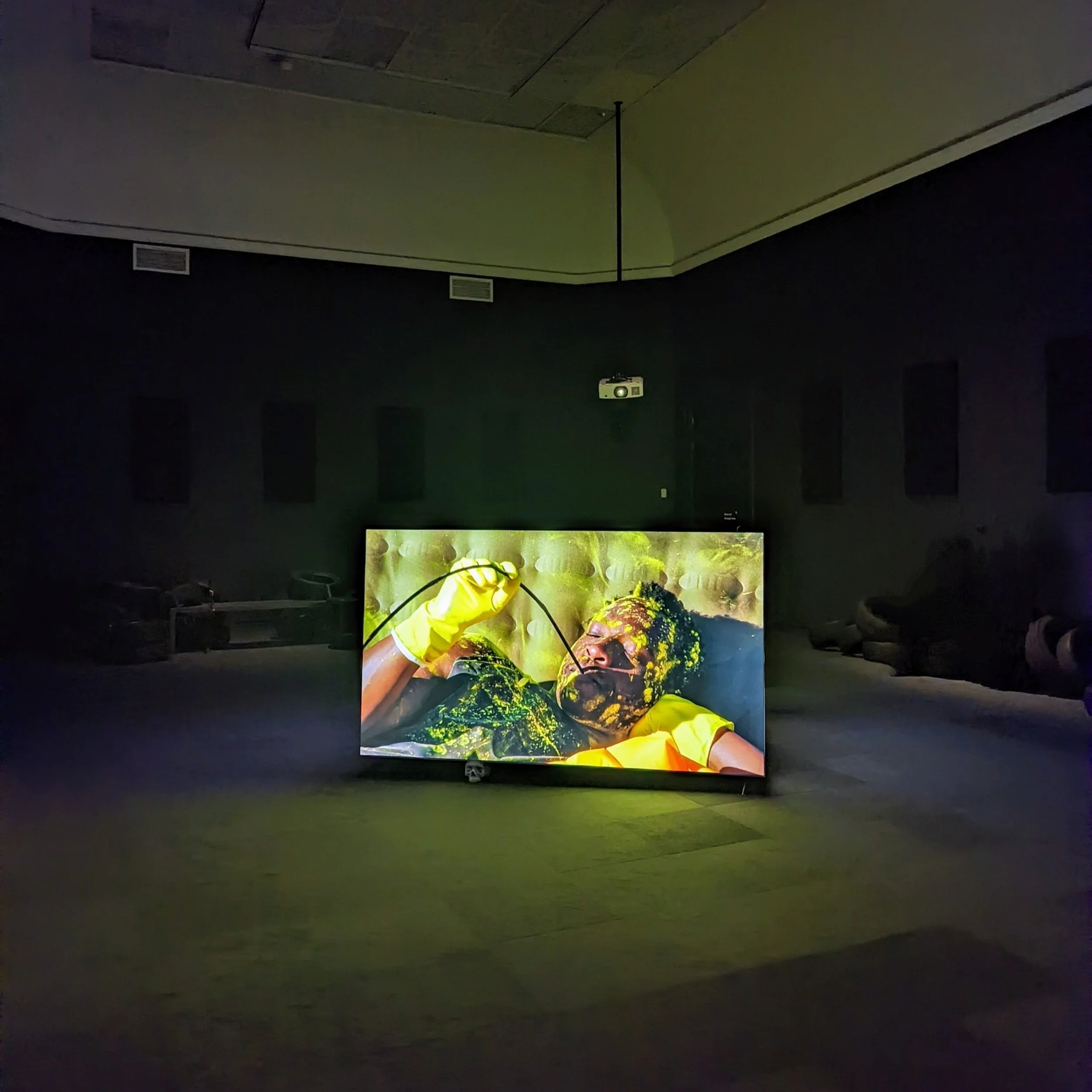We moved the living room to the very back area, and we created the room for Living Room as this giant, oppressive, monolithic cube that was jammed into that corridor of a space. It meant that, on one side you would come around and you would have access to it, but on the other side you would just hit this physical presence of the cube and maybe not even register, like, Where am I? What do I do with this? Am I done with the show? Do I move on? Is there anything else here? There was concern from the curator’s perspective, about circulating. And, as much as I'm all about the politics of circulation, what I'm interested in is talking about the things that clog up that system of circulation. Which for me is symbolized in this sort of monolithic, minimalist object.
And so the peoples that we illuminate on the side of the building mostly just give you access to whoever's sitting on the couch watching the other film. For me, that was a really exciting moment.
I very intentionally came up with the idea of the smaller cube after doing the stripped room idea for the living room, because each one came in stages. I would develop the installation based on ideas I wanted to play on in previous ones, because each one is a unique work, but they have ideas that cross over, but not in a literal, oh, there's characters you're following from one to the next way. There's just these like threads of ideas that are building. So it was really important that there would be these ways that the installations themselves had physical or visual echoes to play off each other.
And what I'm most excited about are the peepholes, because that's an addition where we've crossed. I feel like I found a way for What Is Perverse Is Liquid to intersect with the next work. Because observing and looking, all these ideas aren't exclusive to one work. They just get amplified in different works, in different ways. Objectifying, or even surveillance, right? All of those things that come with that.”
The individual narratives in Leave No Trace (NS 000) vary and feel very much like a sci-fi fever dream. One interlude features two performers laboriously moving an aquarium half-full of cloudy water and rocks, on a flat dolly, through the uneven, pitted terrain of a desert. These two are clad in work gloves, black chemical aprons, and jockstraps, and while the aprons cover the fronts of their bodies almost entirely, protecting them from any toxic spillage, their backs are exposed to all the elements.
Eventually, we see these performers gather with those from other vignettes (one, a family that has brought a sack full of human skulls from their otherwise barren home; another, a go-go dancer, and one person wearing a replica of Chelsea Manning’s military jacket) and the group utilizes broken furniture and salvaged wood to construct protest signs, and an open-air living room-like space with a raised platform sitting atop human skulls.
Although on the surface, these depictions point to a post-apocalyptic future, there is resistance and perseverance in both the people and the harsh landscape. While devoid of trees, the desert scrub brush remains, as do the humans, as well as some decaying remnants of industrial creation. During our conversation, I learned that landscape was instrumental in the development of Burns’ work.

